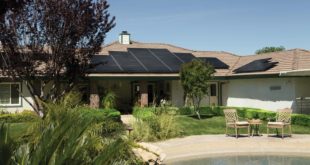When it comes to energy conservation in the home, it’s important to remember that no two situations are alike. A whole-house, systematic approach is the key to correcting deficiencies.
Fortunately, most energy conservation measures are within reach. The tasks associated with making a home more energy-friendly are fairly simple, taking only a little knowledge and the willingness to get dirty. When tackling these projects, safety should always be your first concern. It is advisable to wear a long-sleeved shirt, a mask, gloves, safety glasses and head cover at minimum.
The most common issues detected in an audit/assessment are the following:
– Air infiltration: Air flowing into and out of conditioned living space without control leads to leaks that cause discomfort and can prompt your heating and cooling system to engage. Some homes leak a great deal, and some just leak a lot. Most of these leaks are caused by penetration into or out of the shell of the building. Common examples include plumbing and electrical chases without seals. A very common one is an attic hatch or fold-down steps that do not close tightly. Finally, doors without or with worn-down weather-stripping can allow air into your home. The easiest solution is to seal the gaps with caulk or a similar material. Be sure to wear gloves and old clothes as the materials necessary are very sticky.
– Duct sealing: A recent study by the Department of Energy found that homes that are at least 10 years old can lose as much as 30 percent of conditioned air through leaky duct work. Duct work usually leaks at the attachment to the air handler and at the termination point. This is another fairly easy fix, although the work areas, like the areas above, are in the crawlspace and attic.
If you have flex duct, the foil based, flexible duct that is easy to manipulate that has become the norm, you need to pull back the insulation to reveal the sleeve of the ductwork. Pull the sleeve off of the boot and coat it with water-soluble mastic, which is widely available in home improvement centers. Place the sleeve back onto the boot after it’s been coated. Apply another layer of mastic, then pull your insulation back down and tie it with a zip cord.
If you have un-insulated metal duct work, you need to use a mastic coating wherever there is a seam. It is a good idea to insulate this duct work with foil-covered fiberglass insulation, from the main trunk for the air handler into your conditioned space.
If your ductwork is coated with a canvas-like insulation, be very careful. This can often contain asbestos and it is best to hire a professional to handle this situation.
Insulation is the material placed between the outside and inside of a structure. It is measure in R-value which is the efficiency of a material to slow thermal movement. It is most often associated with Dow Corning’s pink fiberglass product. The higher the R-value number, the better it will slow thermal movement. Space limitations often dictate the amount of insulation that can be installed. It is not unusual to find attics and crawlspace with inadequate or no insulation. This is a do-it-yourself project with a very quick payback. The first step is to read your energy audit report to determine what areas need added insulation. In the Piedmont Triad area, R-30 in the attic, R-19 in the crawlspace and R-13 in the walls, or on the band/rim joist, are the norms. Again, R-value is simply the insulation’s resistance to thermal movement. Fiberglass is the least expensive and most commonly used and can be rolled or blown. Other types include cellulose, which is also blown, and various foam products that are sprayed into place and are more expensive. The attic hatch or pull-down steps are notorious holes in your thermal envelope because they have no sealing or insulation. Fixing this issue also will have a quick payback.
– Lighting: Lights that are used regularly and are on for at least an hour a day should have incandescent bulbs replaced with compact fluorescent bulbs (CFLs). Improvements in these bulbs have been tremendous over the past several years and they are now available in two color types, as well as a dimmable version. It is a waste of money to have them installed in lights that are turned off and on rapidly or are rarely used.
Recessed lights should be labeled In Contact, Air Tight (ICAT) and used only between climate-controlled floors, but it is best to not puncture your envelope at all. The return on investment on lighting changes can be as short as one year.
Whether you complete the recommendations from your auditor yourself, or hire a professional, the changes listed will save you both energy use and money.
Is earth4energy scam? Find out the true |earth4energy review| on http://www.squidoo.com/earth4energyscamrevealed. Best |earth4energy review| available on the internet. Click here to find more about |earth4energy review|
 Alternative Energy HQ solar power for homes, wind energy, and bio fuel issues
Alternative Energy HQ solar power for homes, wind energy, and bio fuel issues







One comment
Pingback: How to Make Children’s Milestones More Sustainable – Alternative Energy HQ